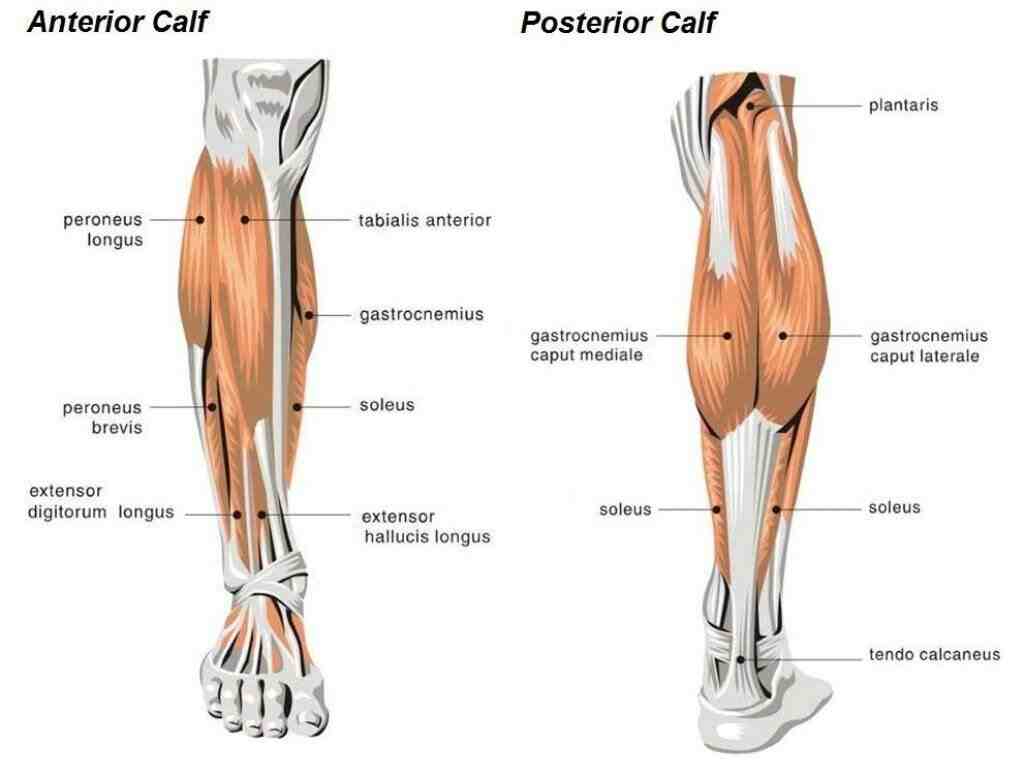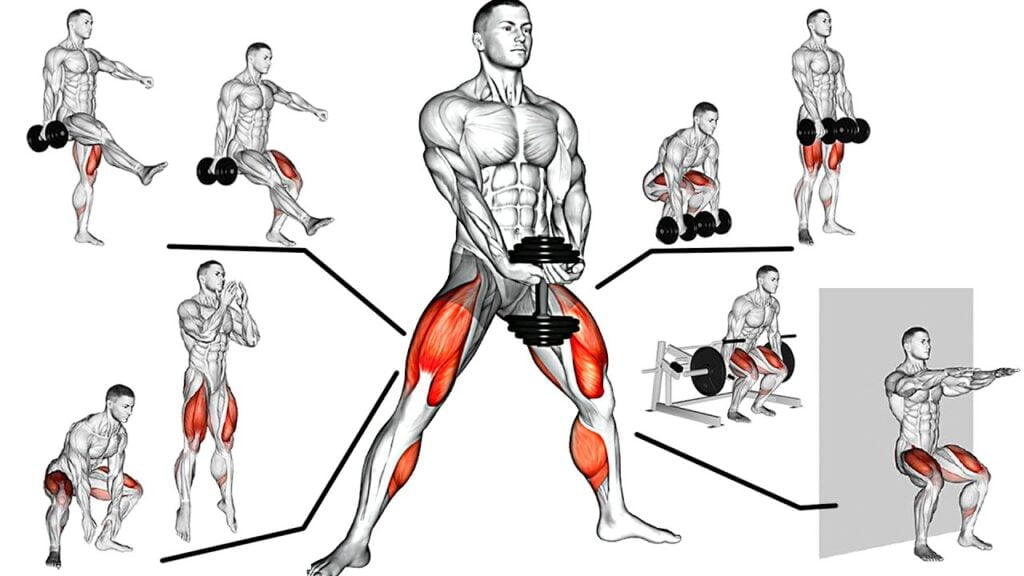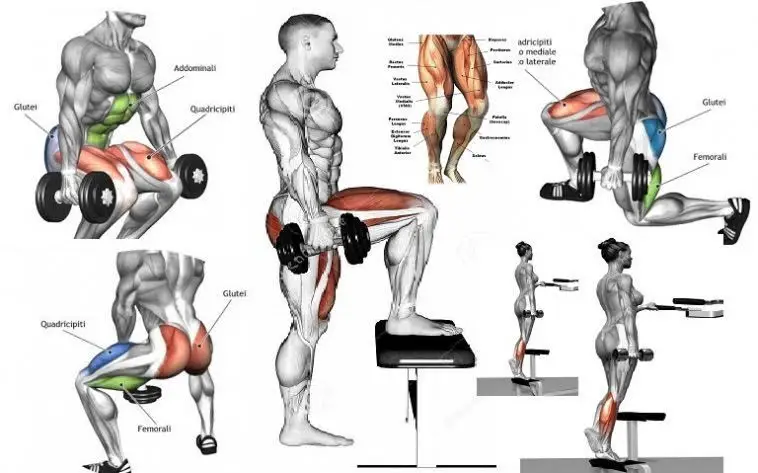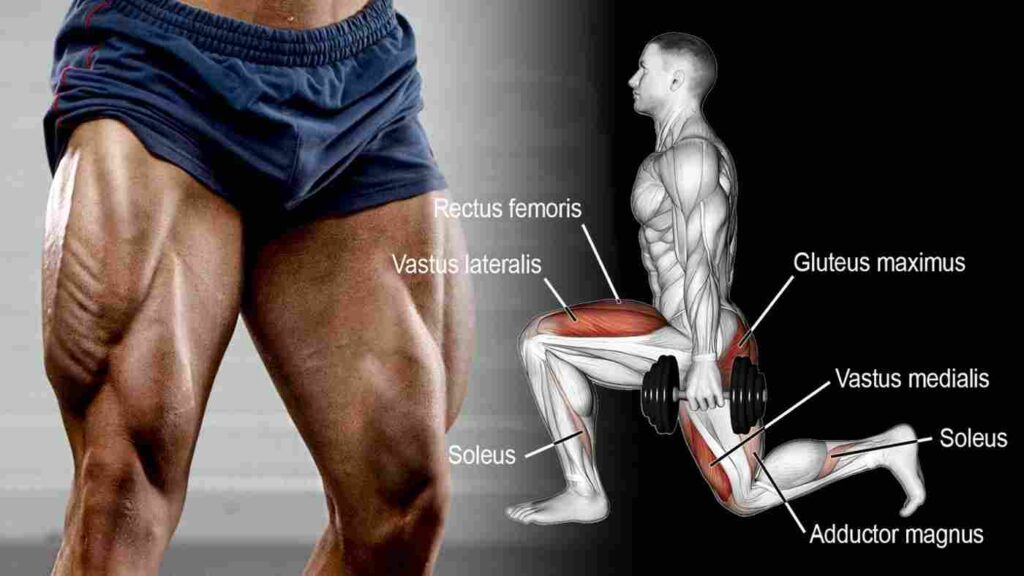When it comes to building strength and muscle, the deadlift is often hailed as a king among exercises. It engages multiple muscle groups across the body, contributing to overall power and physique development. But one question that often arises in fitness circles is: do deadlifts work the calves? The calves may not be the primary focus of the deadlift, but they play a crucial role in the movement.
This article will delve into the anatomy of the calves, their engagement during deadlifts, and how this exercise can contribute to calf development. Whether you’re a seasoned lifter or just starting out, understanding the impact of deadlifts on your calves can help you optimize your training for balanced muscle growth and enhanced performance. So, let’s lift the veil on this weighty topic and explore the connection between deadlifts and calf muscles.
Anatomy of a Deadlift

The deadlift is a compound exercise that works several lower and upper body muscle groups. Here’s a breakdown of the anatomy of a deadlift:
- Quadriceps: The quadriceps extend the knee in the bottom half of the range of motion. This is why some lifters use the cue to ‘push the floor away’ to extend the knee and engage the quad muscles.
- Glutes: The glutes or gluteus maximus play a crucial role in hip extension, especially during the deadlift lockout, to bring the hips closer to the barbell.
- Erectors (Mid-Back): The erectors or erector spinae, running along the spine, are essential in preventing spinal rounding. Maintaining a straight spine under load is vital, as any mid-back rounding can lead to increased stress on the spine.
- Hamstrings: The hamstrings are also involved in the deadlift, acting as stabilizer muscles.
- Adductor Magnus (Inner Thigh): The adductor magnus, a muscle in the inner thigh, is another stabilizer muscle worked in the deadlift.
- Lats: The latissimus dorsi muscles help pull the bar close to the body, providing assistance and stabilization.
- Traps: The trapezius muscles are also involved in the deadlift, acting as stabilizers.
- Rhomboids (Shoulders): The rhomboids, located in the shoulders, are another set of stabilizer muscles worked in the deadlift.
- Abdominals & Obliques (Core): The core muscles, including the abdominals and obliques, are crucial for maintaining stability and preventing injury during the deadlift.
The deadlift can be divided into two stages:
- First Stage: Lifting the bar to knee level. This is done mainly through knee extension. The trunk remains in a forward-leaning position.
- Second Stage: Full extension of the hip and the knee until the body is fully straightened. Keep the bar in contact with the thighs.
SHOP FOR THE WEIGHTLIFTING SHOES ON AMAZON
Remember, proper form and technique are crucial for performing deadlifts safely and effectively.
Role of Calves in Deadlifts
The calves play a significant role in performing deadlifts. Here’s how:
- Stabilization: The calves, specifically the gastrocnemius and the soleus muscles, contribute significantly to maintaining equilibrium during the lift, preventing unnecessary swaying or imbalance.
- Force Transmission: Acting as a bridge between the feet and the rest of the posterior chain, calves aid in efficient force transmission, amplifying the overall lifting capacity.
- Ankle Joint Support: During deadlifts, the calves play a crucial role in stabilizing the ankle joint and providing support during the concentric phase of the lift. As the lifter extends their hips and knees to lift the weight off the ground, the calf muscles help maintain balance and prevent excessive forward or backward lean.
- Plantarflexion: The main function of your calves is to plantarflex your ankles, which naturally occurs when you deadlift. Plantarflexion is the movement that decreases the angle between the sole of the foot and the back of the leg, for example, when you stand on your tiptoes.
SHOP FOR THE ADJUSTABLE DUMBBELL SET ON AMAZON
Remember, while deadlifts do work the calves, they primarily target the glutes, quads, and hamstrings. However, your calves help stabilize your ankle and knees, playing an important role in stabilizing your leg while you deadlift. Since you are driving your heels straight into the ground and falling slightly backward, your calves will always be working.
How to Increase Calf Activation in Deadlifts
Increasing calf activation in deadlifts can be achieved through a few tweaks to your form and technique. Here are some strategies:
- Raise Up on Your Toes: During the first phase of the deadlift, as you lift the bar off the ground, you should raise up on your toes once you are almost in the fully upright position. Try to rise up as much as possible to contract your calves to a maximum.
- Proper Breathing and Bracing: Breathing laterally into your abdomen will help keep you stable and prevent the spine from flexing or extending at the most vulnerable place in the deadlift motion, which is at the beginning of the movement as you lift the bar off the floor. This can indirectly help in better calf activation.
- Exercise Selection: One of the main ways to increase your deadlift strength is to identify the exercises that will help improve areas of muscular weakness within the range of motion. This is called ‘exercise selection’. If you can identify that weakness and train the muscle to get stronger, you should be able to lift more weight.
SHOP FOR THE RESISTANCE BAND ON AMAZON
Remember, proper form and technique are crucial for performing deadlifts safely and effectively.
Common Mistakes and How to Avoid Them
Here are some common mistakes people make when performing deadlifts and how to avoid them:
- Poor Foot Placement: Your feet should be hip-width to shoulder-width apart. A wider stance can compromise the spine by rounding the shoulders. Make sure you set up in a comfortable stance width with your feet subtly turned out.
- Rounded or Arched Back: A flat back or neutral spine is ideal. A rounded forward or arched back position can place undue stress and excess pressure on the back. Keep your spine neutral all the way through the head (do not look up).
- Shoulders Protracted: Retracting or pulling the shoulder blades back and together helps you maintain a neutral spine. When your shoulders protract (release forward), your spine is compromised and will round much easier.
- Squatting Instead of Hinging: The goal of a conventional Deadlift is to perform a hip hinge movement, not a squat variation. Therefore, a chest up, butt down position is not ideal because it does not engage the posterior chain (hamstrings and glutes) for lifting.
- Extending Legs First: As the weight increases, this becomes more common. Lifters drive and extend their legs with the bar moving only slightly or not at all. This leaves the back to perform the rest of the lift.
- Pulling Back First: Concentrate on extending your hips up and into the bar instead of “pulling” the weight straight up.
- Distance From Bar: Your shins may come into contact with the bar, but they should be no farther than one or two inches away at the most. Any farther and you will be reaching forward and be more likely to round your back, lift from your lower back or shift to your toes.
- Jerking the Bar: As the weight gets heavy, you feel like you need an extra oomph. This can lead to a jerky movement which is not ideal for a smooth and controlled lift.
SHOP FOR THE FOAM ROLLER ON AMAZON
Remember, these techniques should be practiced under the guidance of a certified trainer to ensure proper form and prevent injury. Always warm up before starting your workout and stretch after to promote muscle recovery and flexibility.
Benefits of Strong Calves

Strong calves are crucial for overall fitness and well-being. Here are some benefits of having strong calves:
- Body Decelerants: Your calves are responsible for when you need to come to a stop from running or walking first. They absorb up to 12 times your body weight when you are running, and you need to stop or when you need to change directions quickly.
- Stabilize Your Knees: Strong calves are particularly important for jumping exercises and high-intensity interval exercises like burpees. Most people struggle with these exercises because they have weak calves.
- Improved Ankle Strength and Stability: Strengthening your calves can improve ankle strength and stability.
- Enhanced Running and Sprinting Performance: Your calf muscles propel you forward with every single step, they absorb load with each impact and they support the rest of your lower limb and body. By increasing your calf strength you will become faster, be able to run for longer, keep a more consistent pace while running, and be able to jump higher.
- Reduced Risk of Injuries: Neglecting calf strengthening exercises can have detrimental effects on your overall fitness and well-being. Strong calf muscles can help rehabilitate existing injuries or prevent future damage to the lower leg.
- Support Tendons: If you have mobility problems, increasing your calf strength can benefit you as they support tendons, such as the Achilles.
SHOP FOR THE PROTEIN POWDER ON AMAZON
Remember, these benefits should be achieved under the guidance of a certified trainer to ensure proper form and prevent injury. Always warm up before starting your workout and stretch after to promote muscle recovery and flexibility.
Common Misconceptions
There are several common misconceptions about deadlifts and their impact on the calves. Here are a few:
- Deadlifts Don’t Work the Calves: Some people believe that deadlifts don’t work the calves at all. While it’s true that deadlifts primarily target the glutes, quads, and hamstrings, the calves do play a role in the movement. They help stabilize your ankle and knees, playing an important role in stabilizing your leg while you deadlift.
- Sore Calves After Deadlifts Indicate Effective Calf Work: If you have sore calves after deadlifts, it’s likely due to form issues or chronic tightness, not because the deadlift is an effective calf exercise.
- Sumo Deadlifts are Cheating: Some people believe that sumo deadlifts are cheating because they reduce the distance the bar has to travel. However, both sumo and conventional deadlifts are legal in powerlifting competitions, and each has its own advantages and disadvantages.
- Deadlifts are Only a Posterior Chain Exercise: While deadlifts do work the posterior chain muscles (those on the back of your body), they also require strong quads to break the bar away from the floor.
How Can I Strengthen My Quads at Home?
Remember, understanding the mechanics of the deadlift and the role each muscle plays can help you perform the exercise more effectively and safely.
FAQs
Q 1. Can deadlifts increase the size of my calf muscles?
Ans. Yes, deadlifts can contribute to the growth of your calf muscles. The gastrocnemius and the soleus, the main muscles of your calves, are involved in the deadlift. However, it’s important to note that while deadlifts do work the calves, they primarily target the glutes, quads, and hamstrings.
Q 2. Are deadlifts a good exercise for calf development?
Ans. While deadlifts do work the calves, they are not primarily a calf exercise. Deadlifts are a compound exercise that works several muscle groups, including the glutes, quads, and hamstrings. However, your calves help stabilize your ankle and knees, playing an important role in stabilizing your leg while you deadlift.
Q 3. Do I need to do additional calf exercises if I’m already doing deadlifts?
Ans. While deadlifts do work the calves, if your goal is to specifically develop your calf muscles, you may want to incorporate additional calf-specific exercises into your routine. This could include exercises like calf raises or seated calf raises.
Q 4. Can I get calf strains from doing deadlifts?
Ans. Like any exercise, improper form or overexertion during deadlifts can lead to muscle strains, including in the calves. It’s important to use proper form, warm up properly, and not lift more weight than you can handle to reduce the risk of injury.
Conclusion
In conclusion, deadlifts are a powerful compound exercise that works several muscle groups, including the calves. While the primary targets of deadlifts are the glutes, quads, and hamstrings, the calves play a crucial role in stabilizing the ankle and knees during the lift.
By understanding the mechanics of the deadlift and the role each muscle plays, you can perform the exercise more effectively and safely. Remember, proper form and technique are key to reaping the benefits of deadlifts and preventing injury.

Good day, and welcome to Fitthour. My name is Shubham Vijay, and I am a certified personal trainer and nutrition coach with 6 years of experience in the fitness industry. At Fitthour, we specialize in types of training, such as strength training, cardio, or HIIT, and our mission is to help clients achieve their fitness goals and improve their overall health.




